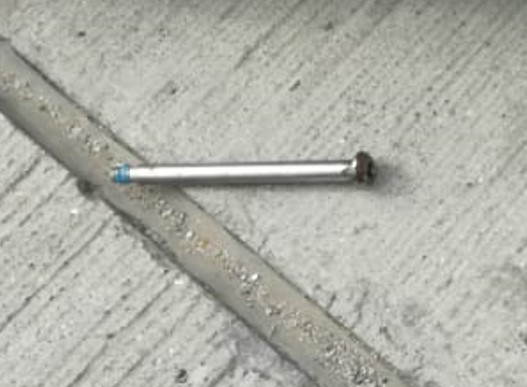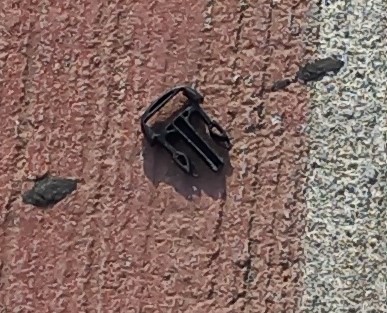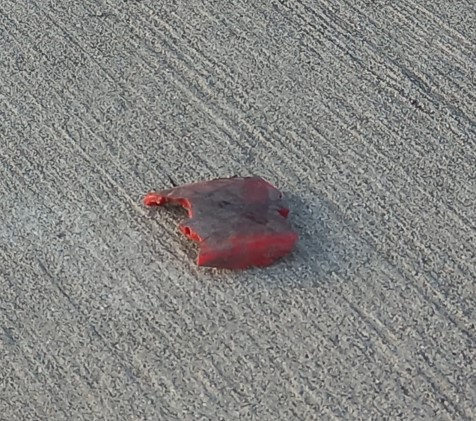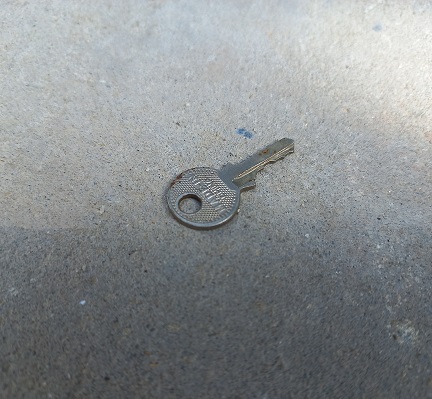Foreign Object Debris (FOD) is a matter of critical importance in the world of aviation. The topic has been given special attention by aviation authorities, airlines, ground handling companies and airport operators around the world.
While the concept of FOD is associated with all of airside on an airport, we are going to focus on the importance of FOD in ramp safety (or aircraft stand safety) in today’s article.
Inspection of ramp for Foreign Object Debris (FOD) is critical for safety of operations on the ramp. However, it is first important to understand what is FOD?
As the name implies, Foreign Object Debris (FOD) is any object or debris that is foreign to the aircraft, ramp and airside of the airport. It is any object, big or small, that poses risk of damage to the aircraft, airside equipment or airside personnel.
Standard Definition of FOD
If we look at the standard definition of FOD, we can find it in Advisory Circular issued by Federal Aviation Administration, United States Department of Transportation:
“Any object, live or not, located in an inappropriate location in the airport environment that has the capacity to injure airport or air carrier personnel and damage aircraft.”
– FAA Advisory Circular No. 150/5210-24 dated 09th October 2010
Similarly, International Civil Aviation Organization (ICAO) defines FOD as:
“An inanimate object within the movement area which has no operational or aeronautical function and which has the potential to be a hazard to aircraft operations.”
– ICAO SARPs Annex 14, Volume-I: Aerodrome Design & Operations, 7th Edition, July 2016
FOD Sources
FOD is not just limited to the ramp. As we have already seen in the definitions, FOD can be found on the runway, taxiway, apron or any other similar area of the airport where aircraft operation can take place. However, we will focus on the FOD on the ramp in this article for the sake of relevance with our topic.
First, it is important to elaborate what types of things become FOD to create a good picture of FOD in your mind. At the same time, it is equally important to understand the source of each FOD item. Let us give some examples:




FOD Damage
FOD Damage is another term you will find in literature from aviation authorities. It simply refers to the damage caused by FOD. These damages can include:
- Damages to aircraft body due to collision with objects.
- Damages to aircraft tires which is especially true for any sharp objects present on the aircraft stand that can dig into the tires if the aircraft runs over them.
- Ingestion by the jet engines causing mechanical damage to the jet engine fan and turbine blades.
- Damages to other aircrafts, building or piece of airport equipment due to FOD flying off from aircraft’s jet blast to hit other objects.
It is important to reiterate that FOD damage is not limited just to the aircraft. If let’s say a jet bridge tire gets damaged by running over a sharp object (FOD) laying on the ramp, it will also fall under FOD damage. Similarly, whenever FOD causes damage to any airport equipment, it falls under FOD damage.
In short, there can be many different types of FOD on the ramp that can be traced to many different types of sources. FOD can result in damage to the aircraft or any other airport equipment or object. In order to ensure ramp safety, it is as important to address FOD prevention as it is to remove FOD after preflight ramp inspection. This is what brings us to FOD Control and FOD Management.
FOD Control & Management
You will often find the terms ‘FOD Management’ and ‘FOD Control’ in literature from aviation authorities, airline companies and ground handling agencies. The very existence of these terms and the fact that there is dedicated literature on them expresses how important the matter of FOD is in the world of aviation.
FOD Control and FOD Management is all about preventing FOD on an airport (including the ramp). It is about not limiting the efforts just on finding FOD and removing it but also preventing it. It is about considering the potential and probable sources of FOD that you are experiencing at your airport and taking necessary steps to control FOD at its source.
It involves taking up the matter with concerned departments and agencies to make them aware of the problem you are observing and developing measures for FOD prevention. For example, if you found a piece of tool laying on the ramp in your inspection, it must have come from some maintenance activity.
That activity can be traced to the concerned company or agency (like an airline company or ground handling company) by airport management by checking the records of all the activities that have taken place on that aircraft stand.
Finally, the matter can be taken up with the concerned company to make their maintenance staff aware to carry out a thorough FOD inspection whenever they complete their maintenance work. It will prevent FOD left behind on the ramp in the first place.
So this how FOD is inspected, removed and controlled to improve ramp safety and prevent ramp accidents. Airport management, airline management and any other agency working on the ramp is a stakeholder in the matter of FOD. Preventing accidents from FOD requires collective efforts from all stakeholders because safety is everyone’s responsibility.
If you are interested in obtaining a base level knowledge about ramp safety, check out this 7-hour video based course on Udemy that you can easily finish in a week (or binge watch in a day or two). It explains ramp safety in detail with interesting case studies of ramp accidents for in-depth understanding of the subject. It also explains ramp safety aspects associated with 13 main ground handling operations carried out on the ramp.